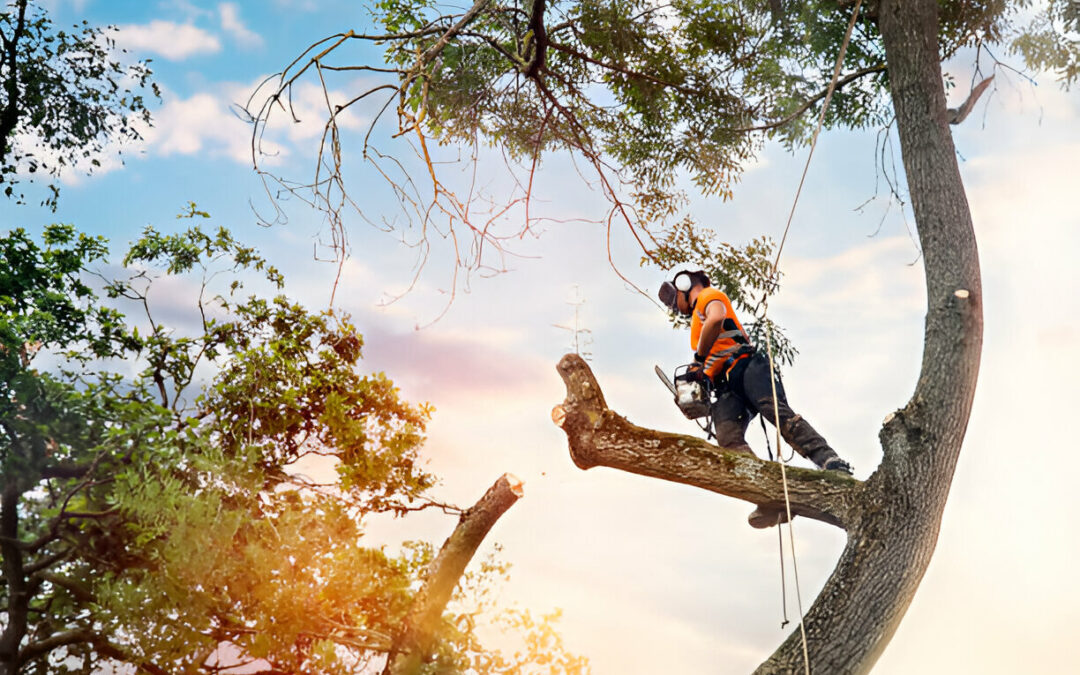Tree trimming is essential for healthy growth, improved structure, and overall safety. But timing matters—doing it at the wrong time can stress a tree, limit growth, or even cause damage.
Knowing the best time of year for tree trimming ensures your trees stay healthy and look their best year-round.
The right season depends on your tree’s species, purpose for trimming, and local climate. By trimming at the proper time, you encourage strong branches, reduce risk, and maintain curb appeal.
Winter (Dormant Season) Is Ideal for Most Trees
Late winter is generally considered the best time to trim most deciduous trees. This is when trees are dormant and less vulnerable to stress or disease.
- Prune between late winter and early spring (February–early April): Trees are still dormant, and new growth hasn’t started yet. This promotes strong spring growth.
- Branches are easier to see without leaves: Clear visibility helps make accurate cuts. It also makes spotting dead or crossing branches simpler.
- Healing is faster as growth begins in spring: The tree quickly seals pruning wounds, reducing the risk of infection.
- Fewer pests and diseases are active: Trimming in winter limits exposure to insects and pathogens that thrive in warmer weather.
Winter trimming supports tree health and structure while reducing the chances of pest infestation or poor healing.
Summer Trimming Helps Control Growth
While not ideal for major cuts, summer trimming can help manage shape and slow down aggressive growth.
- Trim lightly in mid to late summer: This is useful for shaping or reducing size. Just avoid major limb removal.
- Remove suckers and water sprouts: These fast-growing shoots divert energy from the main structure. Removing them encourages healthier branching.
- Good time for correcting minor shape issues: Trees can be trimmed for aesthetics once their seasonal growth is complete.
- Best for fruit trees or flowering ornamentals: Summer shaping can boost airflow and sun exposure for better fruiting.
Summer trimming is best for light maintenance—not major structural work.
Avoid Heavy Trimming in Fall
Autumn may seem like a good time to tidy up, but it’s actually the worst time to trim most trees.
- Trees are preparing for dormancy: Pruning in fall interrupts this natural process. It can stress the tree before winter.
- Fungal spores are more active: Fresh cuts in fall are more vulnerable to infection. Wounds heal slower in cool, wet conditions.
- Trimming can trigger new growth: Late-season shoots may not survive the winter. This weakens overall tree health.
- Only remove dead or damaged limbs: Emergency trimming is okay, but avoid routine pruning unless absolutely necessary.
Fall should be reserved for clean-up or emergency trimming—not general maintenance.
Consider Tree Type and Goals
Not all trees follow the same seasonal rules. Some species benefit from specific timing based on growth habits.
- Trim spring-flowering trees after blooming: This preserves buds for the next season. Early trimming will remove flower-producing wood.
- Evergreens need minimal trimming: Light shaping in late spring or early summer is usually enough. Avoid cutting into old wood.
- Oak trees should only be trimmed in winter: This helps prevent oak wilt, a serious disease spread by beetles during warm months.
- Hire a certified arborist for guidance: They can recommend the best timing based on tree health and local climate.
Understanding the type of tree and your goals ensures you trim at the right time for optimal results.
The best time to trim trees depends on species, reason for trimming, and regional conditions. For most trees, late winter is the safest and most effective season, while summer is suitable for light shaping. Avoid heavy pruning in fall, and always consider your specific tree’s needs. By timing your tree trimming properly, you improve health, shape, and safety—ensuring your landscape stays strong and attractive year after year.

